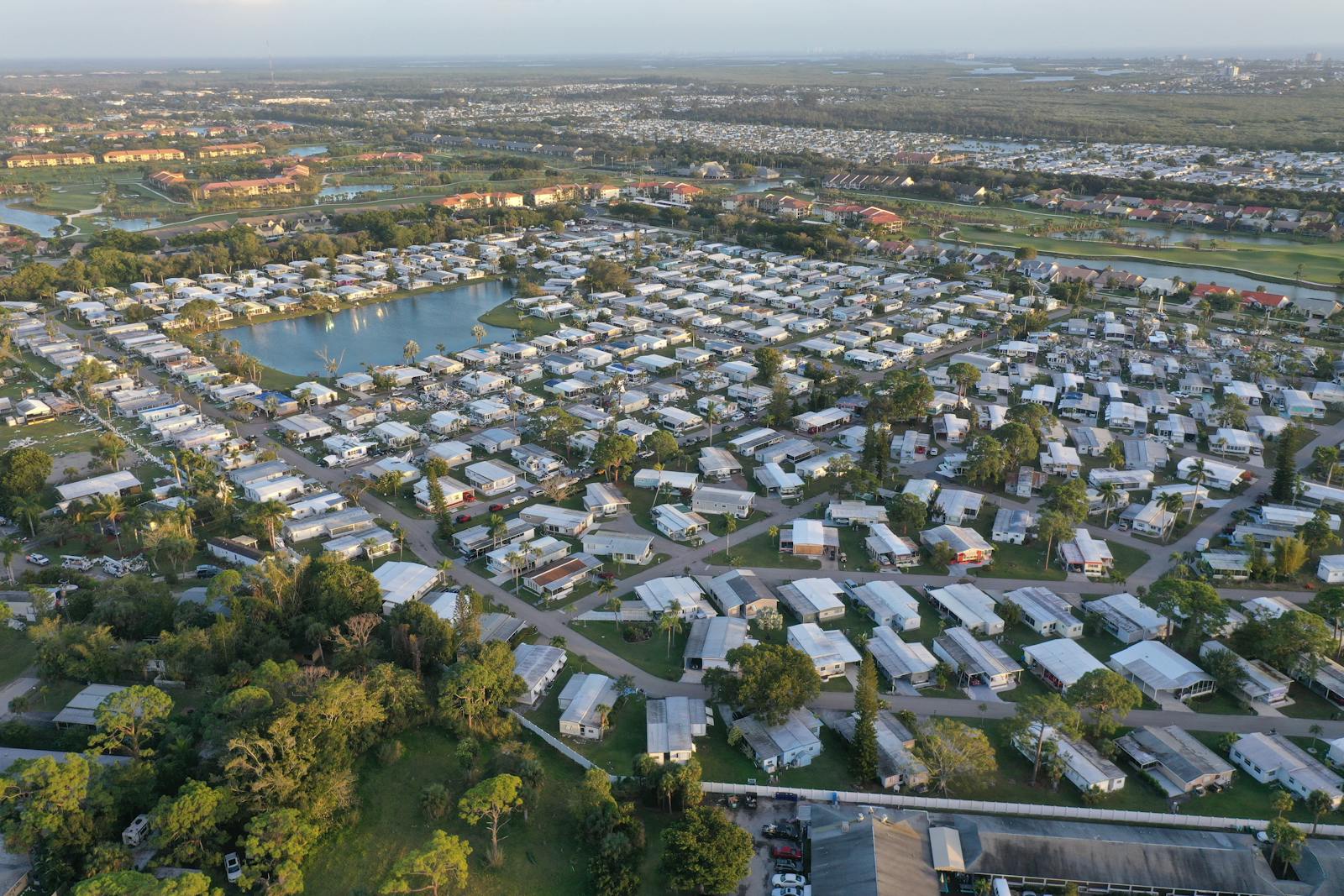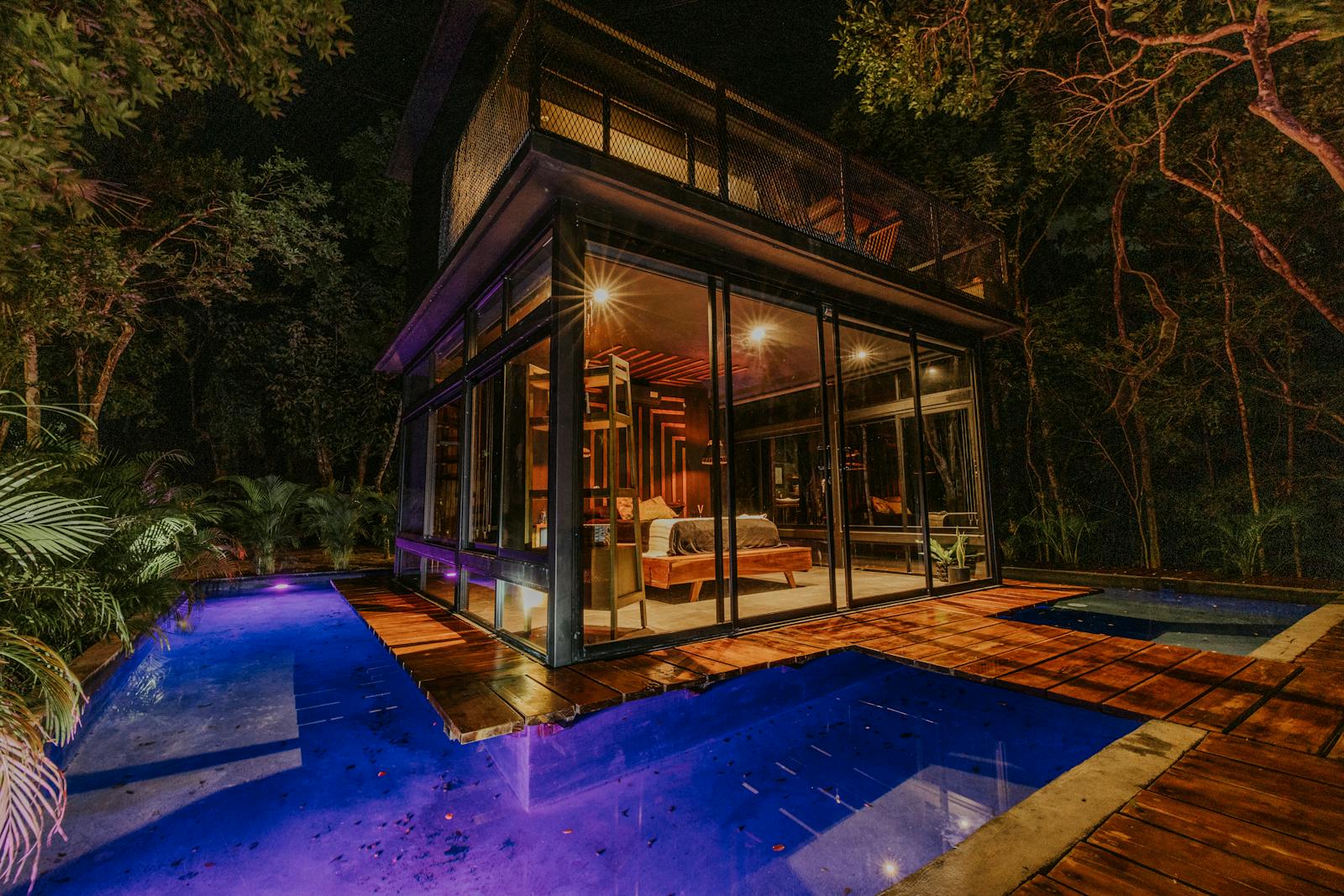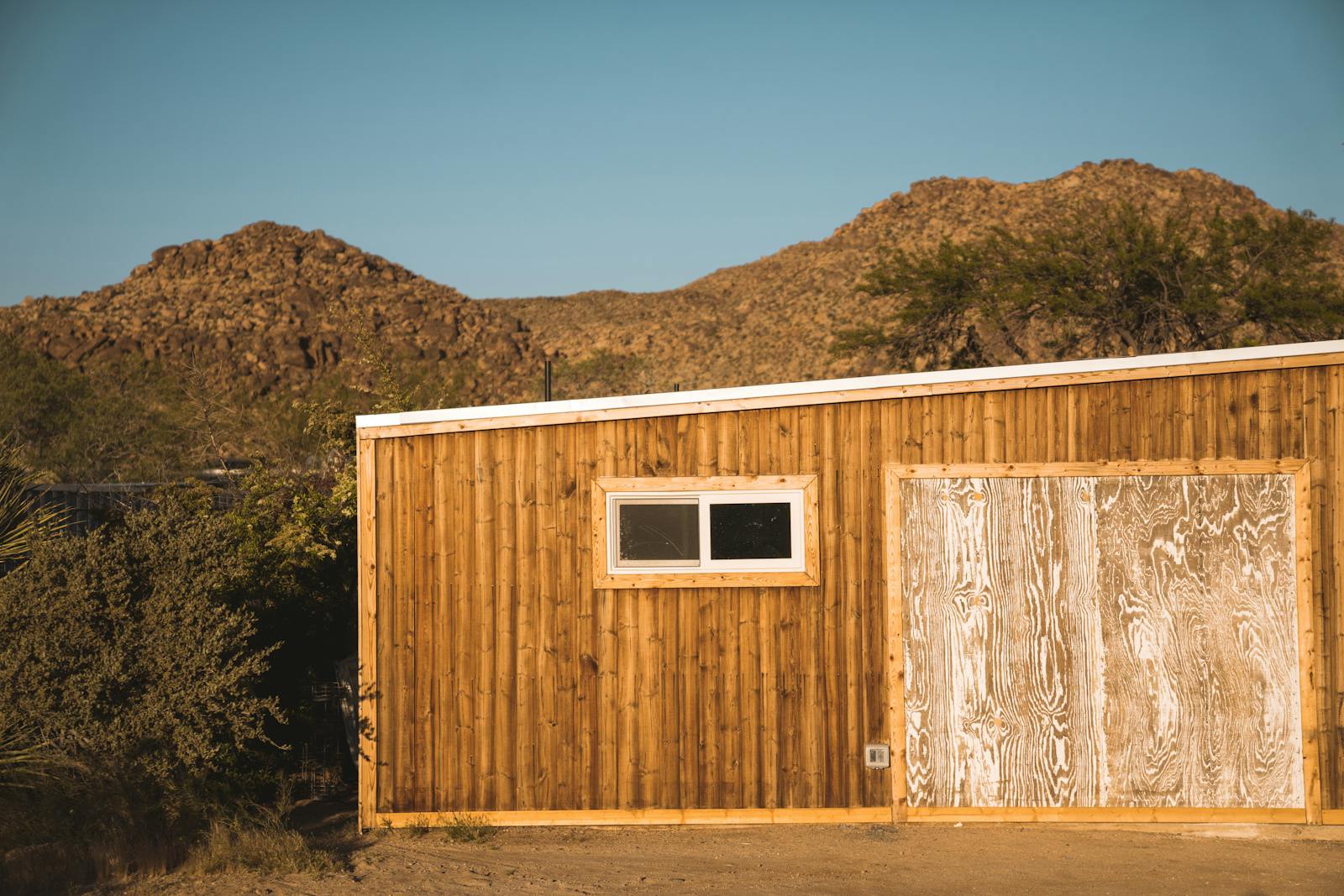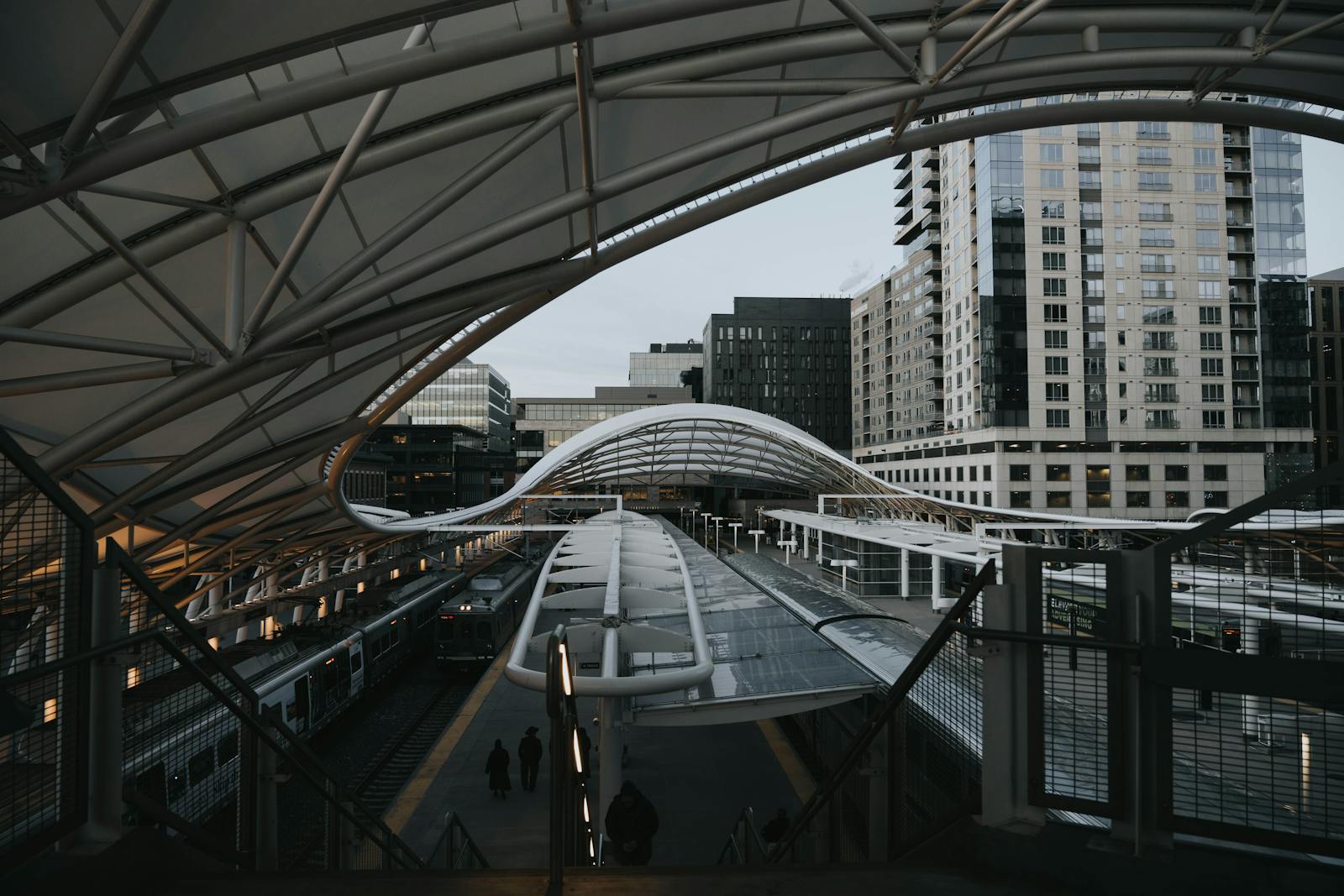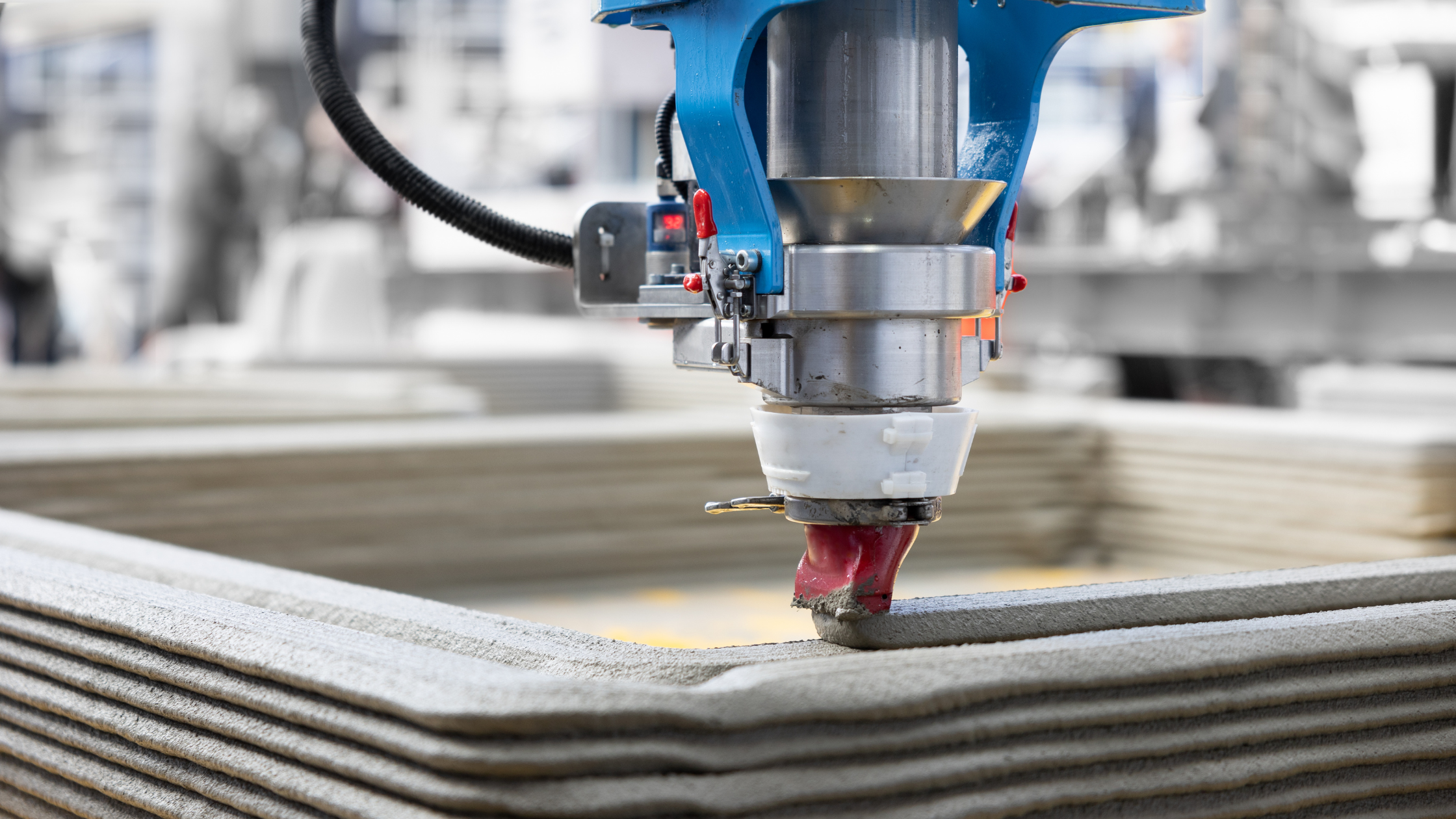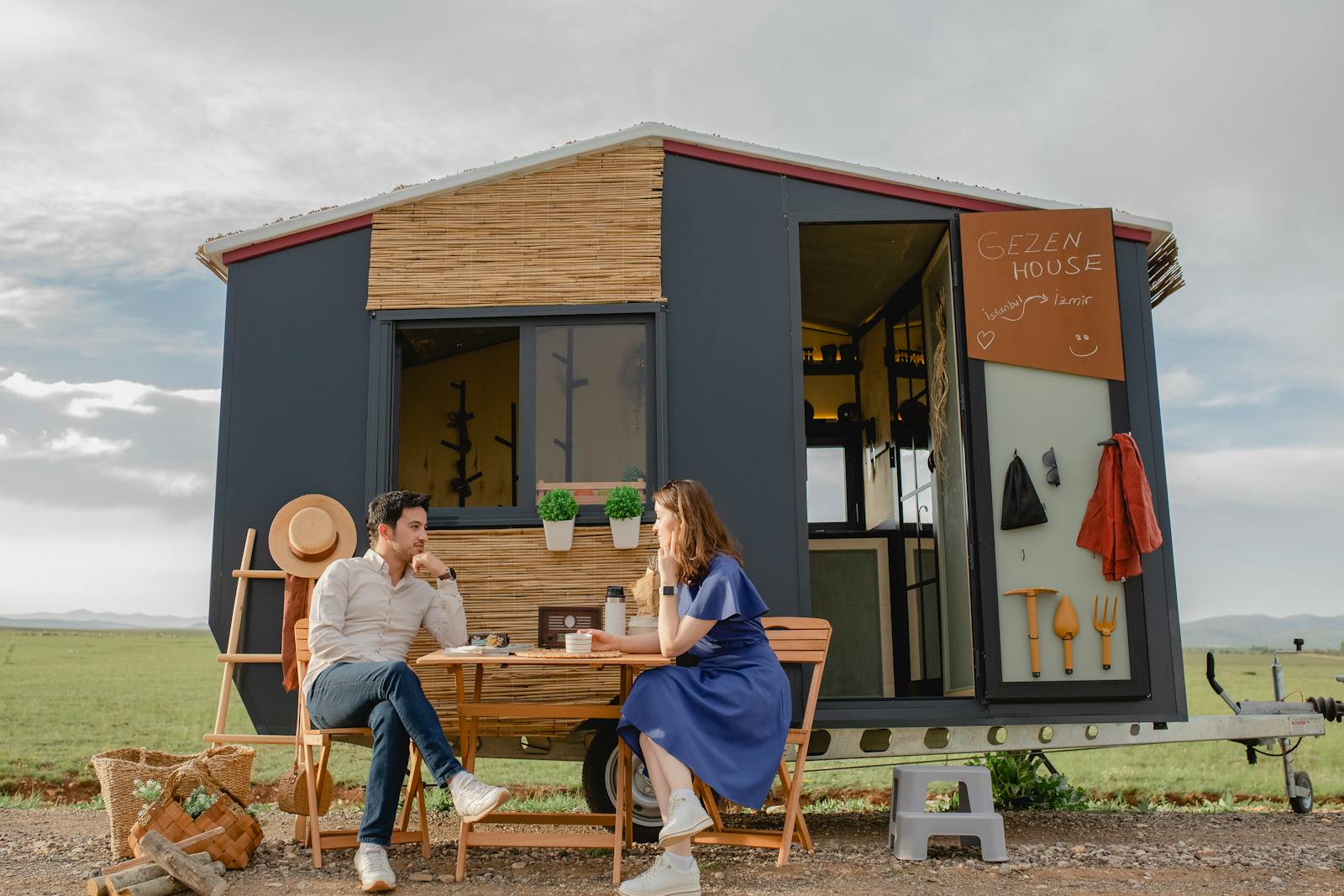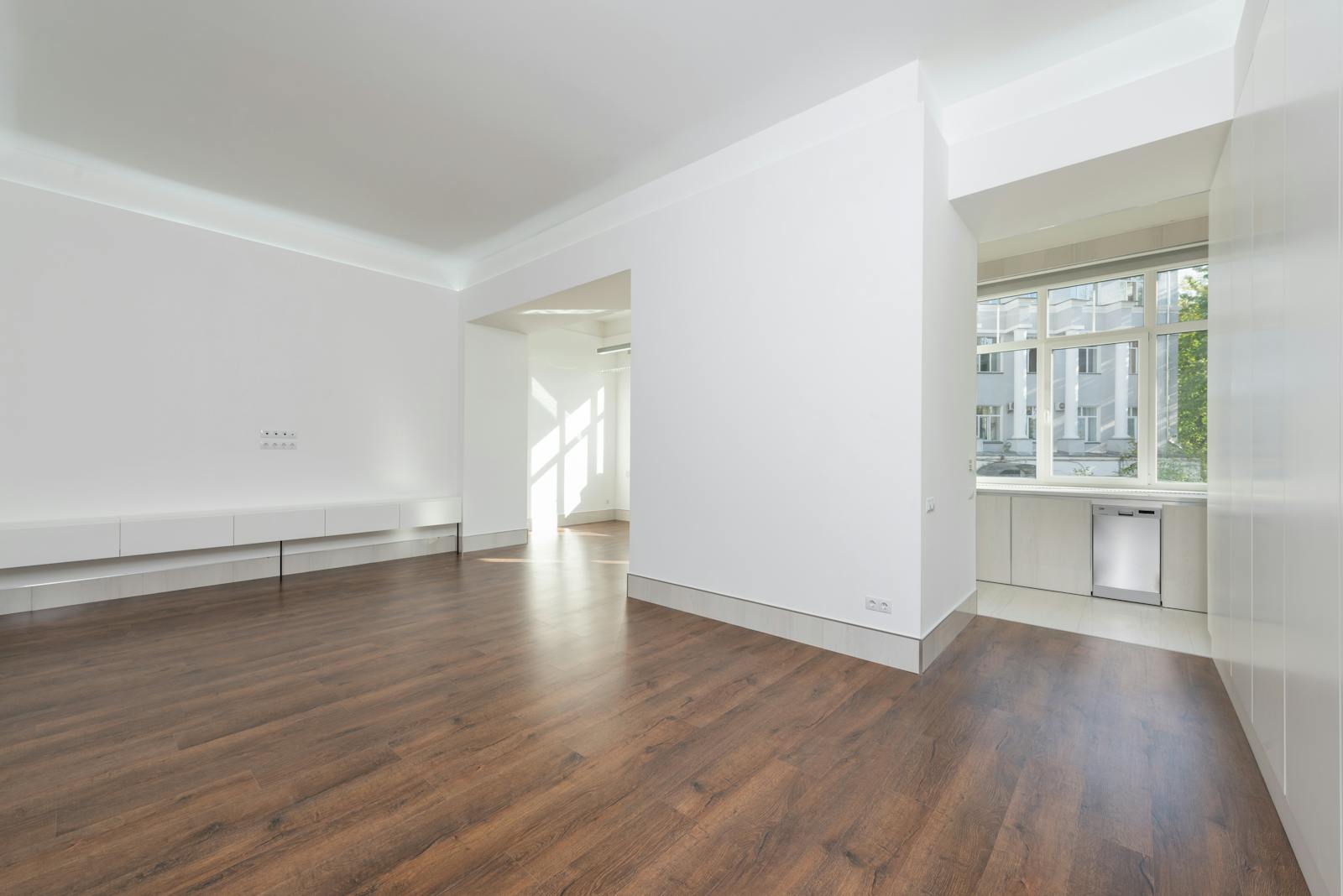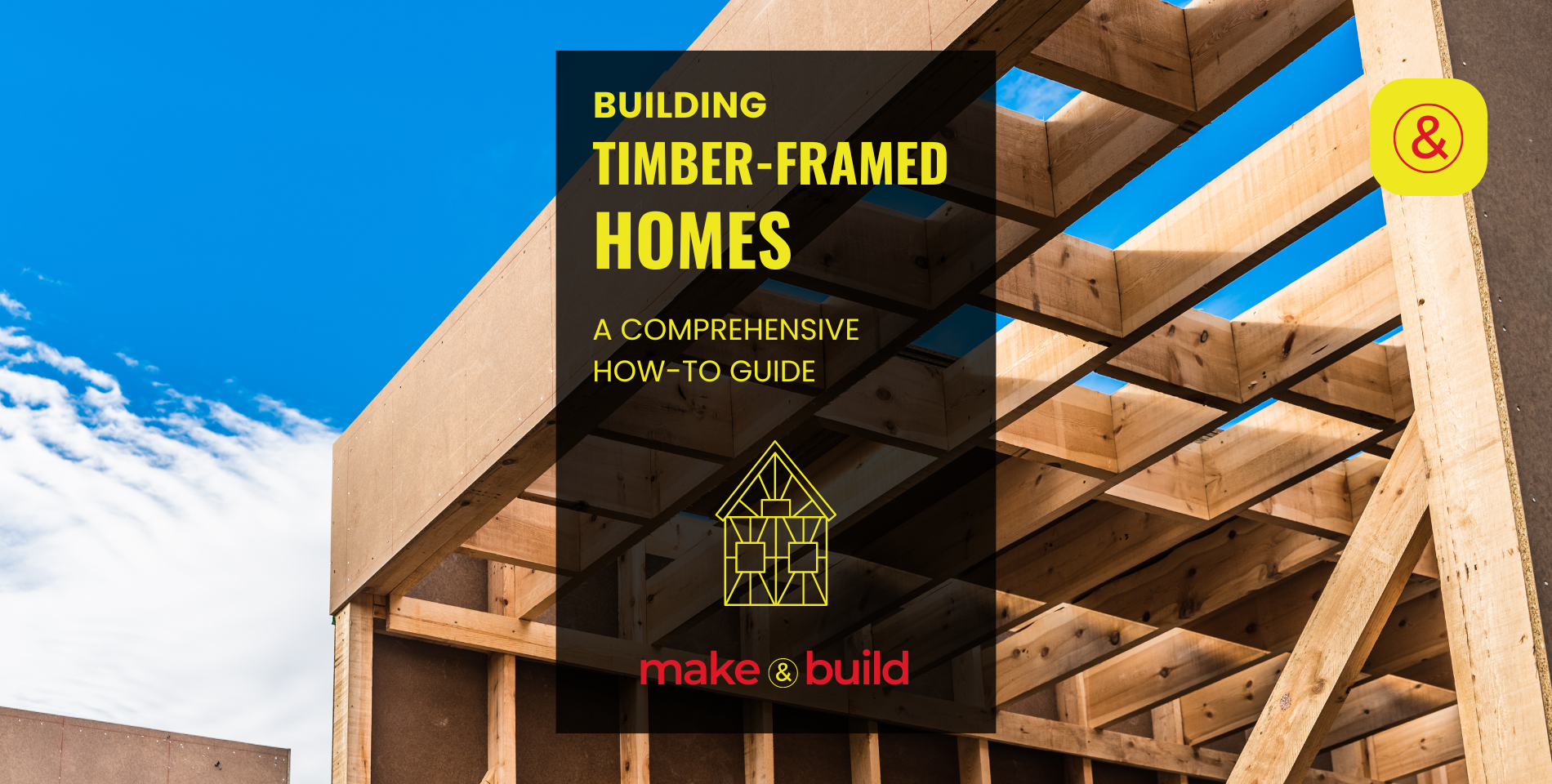Building in Fort Myers, United States
Fort Myers, Florida, is a fast-growing coastal city known for waterfront development, strong investment potential, and hurricane-ready building standards.
Building in Fort Myers, United States
Fort Myers, Florida, is a fast-growing coastal city known for waterfront development, strong investment potential, and hurricane-ready building standards.
Fort Myers Building Insights
- Scores
- Building Insights
- Photos
- Video
- Building Costs & Affordability
- Zoning & Land Use Regulations
- Infrastructure Readiness
- Climate & Environmental Factors
- Sustainability & Green Building
- Construction Workforce
- Investment & Development Potential
- Permitting & Bureaucratic Hurdles
- Seismic, Flood & Disaster Resilience
- Urban Expansion vs. Rural Development
- Top Construction Methods Used in the City
✅ Overall City Development Score
🏛️ Ease of Building Permits & Regulations Score
📍 Zoning Flexibility Score
🏢 Land Availability Score
👷 Construction Workforce Availability Score
🪵 Material Accessibility Score
🔌 Infrastructure Readiness Score
💰 Cost of Construction Score
⏳ Project Completion Speed Score
🌡️ Climate Adaptability Score
🌪️ Extreme Weather Risk Score
💨 Air Quality Score
🚰 Water Availability & Quality Score
🏗️ Soil Stability Score
🌱 Sustainability & Green Building Score
🏦 Real Estate Investment Potential Score
📊 Cost of Living Score
📈 Property Value Growth Score
📝 Taxation & Development Incentives Score
🏢 Business & Commercial Growth Score
🚇 Transportation & Public Transit Score
⚡ Utility & Energy Reliability Score
📡 Smart City & Technology Integration Score
🚶 Walkability & Accessibility Score
🏗️ Urban Density & Space Efficiency Score
🛡️ Safety & Crime Rate Score
🎓 Education & Workforce Training Score
🏥 Healthcare & Emergency Services Score
🏡 Community Development & Livability Score
🚀 Future Growth Potential Score
📖 City Building Overview:
Fort Myers is a vibrant city in Southwest Florida with booming real estate, a mix of urban and rural development zones, and a subtropical climate ideal for year-round building. With strong infrastructure and consistent population growth, it’s a popular destination for builders and investors. Fort Myers’ construction landscape is shaped by coastal regulations, storm resilience, and ongoing redevelopment efforts. The city blends tourism appeal with residential affordability, making it ideal for sustainable and scalable development.
City Name 🏙️
Country 🌍
United States
Latitude & Longitude 📍
26.6406° N, 81.8723° W
✈️ Living & Working Remotely
Climate & Weather Considerations ☀️🌧️
Humid Subtropical
Nearby Parks and Attractions 🌅
Lakes Regional Park, Six Mile Cypress Slough Preserve, Centennial Park, and the nearby Sanibel Island beaches.
Best Construction Methods for the City 🏗️
-
Prefab
-
Concrete block
-
Elevated foundations
-
Hurricane-resistant materials
-
Sustainable cooling designs
Local Building Regulations & Permits 📜
Fort Myers follows the Florida Building Code and Lee County permitting system, including coastal construction rules, stormwater management, and wind zone compliance. All development must align with city zoning ordinances and FEMA floodplain standards.
Water Management & Tap Water Quality 💧
Tap water in Fort Myers meets federal standards and is generally considered safe, but hard water is common. Infrastructure improvements are ongoing, especially in older neighborhoods, with periodic advisories issued during hurricanes or flooding. 💧 Learn more about water quality and management at WaterWise Innovations or check your local tap water report here. 🚰
Zoning & Land Use Restrictions 🏢
The city uses a detailed zoning map that includes residential, commercial, mixed-use, and redevelopment zones. Height restrictions apply in coastal and flood-prone areas. Land use planning encourages vertical density downtown while preserving suburban spread.
Farming & Gardening Potential 🌱
The subtropical climate supports a wide range of home gardening year-round. Citrus, papaya, avocados, herbs, and native landscaping thrive with proper irrigation. Raised beds and screened greenhouses are common due to pests and humidity. 🌱 Explore the best gardening strategies for your area at RootJoy!
Availability of Construction Materials 🏗️
Easy
City Sustainability 🌍
Developing — Fort Myers is increasingly adopting LEED-certified projects and resilient infrastructure but lags behind larger Florida metros in full-scale green initiatives. 🌍 Discover how cities are embracing sustainability at Sustainable World!
Cost of Construction Per Square Foot 💰
$160–$230 USD
Workforce & Skilled Labor Availability 👷
Medium
Sustainability & Green Building Initiatives 🌱
Developing — Some solar integration, energy-efficient standards, and coastal resilience incentives in place.
Infrastructure & Utilities Access ⚡
Reliable — Well-developed electric grid, water/sewer lines, and internet access. New developments have full access; older zones undergoing upgrades.
Resilience to Natural Disasters 🌪️
-
Hurricanes ✅
-
Floods ✅
-
Fires ❌
-
Earthquakes ❌
Investment & Development Opportunities 📈
High — Rapid population growth, tourism-driven economy, and waterfront development create strong ROI for residential and mixed-use projects.
Urban vs. Rural Development Suitability 🌆🏡
-
Urban: ✅
-
Rural: ✅
-
Suburban: ✅
Government Incentives & Grants 💸
Incentives available for redevelopment, hurricane hardening, and certain green energy improvements through state and local programs.
Building Insights & Key Facts 🔍
-
Fort Myers is one of the fastest-growing metro areas in the U.S.
-
Zoning allows for ADUs and mixed-use in targeted districts.
-
Hurricane zones require elevated foundations and impact-rated materials.
-
Local builders are well-versed in coastal codes and wind-resistant techniques.
City Development Score 📊
76/100
🏗️ Building Costs & Affordability in Fort Myers, Florida
💵 Construction Costs
Fort Myers has a wide range of construction costs depending on the desired quality of the build:
-
Standard Homes typically range from $120 to $140 per square foot.
-
Premium Homes fall between $140 and $180 per square foot.
-
Luxury Builds can reach up to $220 per square foot or more.
These estimates do not include the cost of land, permitting, or design fees. Site preparation, utility hookups, and impact fees can add substantially to the final total.
🏠 Housing Affordability
Home affordability in Fort Myers has been declining. Rising property values and construction costs have made it increasingly difficult for many first-time buyers and middle-income families to enter the housing market. Median-priced homes are now considered unaffordable for a large portion of the population.
🏗️ Factors Affecting Costs
-
Labor Costs typically make up around 40% of total expenses and vary based on availability and demand.
-
Material Costs have been affected by supply chain fluctuations and inflation, adding volatility to project budgeting.
-
Permit & Impact Fees often add between $15,000 and $25,000 to total project costs, depending on location and type of build.
🏘️ Local Affordable Housing Efforts
Local programs have been initiated to promote affordable housing and support residents earning at or below the area median income. These initiatives aim to balance rapid development with inclusive growth, ensuring opportunities for low-to-middle-income households.
🏢 Zoning & Land Use Regulations in Fort Myers, Florida
📋 Overview
Fort Myers employs a comprehensive zoning and land use framework to manage growth, preserve community character, and ensure sustainable development. The city’s regulations are designed to balance residential, commercial, industrial, and mixed-use developments while protecting environmental resources and accommodating future expansion.
🗺️ Zoning Classifications
The city is divided into various zoning districts, each with specific permitted uses and development standards:
-
Residential (R): Includes single-family and multifamily housing, with density and lot size requirements varying by subcategory.
-
Commercial (C): Encompasses retail, office, and service-oriented businesses, often located along major corridors and in designated commercial centers.
-
Industrial (I): Designated for manufacturing, warehousing, and distribution facilities, typically situated away from residential areas to minimize conflicts.
-
Mixed-Use (MU): Allows a combination of residential, commercial, and sometimes light industrial uses within a single development or area, promoting walkability and reducing the need for vehicle travel.
-
Special Purpose Zones: Include areas like historic districts, conservation zones, and planned development districts (PDDs) that have unique regulations tailored to specific goals or characteristics.
🏗️ Development Standards
Each zoning district has defined standards governing aspects such as:
-
Density: Limits on the number of dwelling units per acre.Municode Library
-
Setbacks: Minimum distances buildings must be set back from property lines.
-
Building Height: Maximum allowable heights to maintain neighborhood scale and character.
-
Lot Coverage: Percentage of a lot that can be covered by structures.
These standards ensure that developments are compatible with their surroundings and adhere to the city’s vision for orderly growth.
🛠️ Land Use Regulations
Fort Myers’ land use regulations are guided by its Comprehensive Plan, which outlines the city’s long-term goals for development, infrastructure, and environmental stewardship. Key components include:
-
Future Land Use Map: Designates the intended use of land across the city, guiding zoning decisions and development approvals.
-
Overlay Districts: Apply additional regulations to specific areas, such as design standards in historic districts or environmental protections in sensitive habitats.
-
Planned Development Districts (PDDs): Allow for flexible design and mixed-use projects that may not conform to standard zoning but align with the city’s planning objectives.
📝 Permitting Process
Developers and property owners must obtain the appropriate permits before commencing construction or significant alterations. The process typically involves:
-
Pre-Application Meeting: Discuss the proposed project with city staff to understand applicable regulations and requirements.
-
Application Submission: Provide detailed plans, studies, and other documentation for review.
-
Staff Review: City departments assess the proposal for compliance with zoning, land use, and building codes.
-
Public Hearings: Required for certain projects, such as rezoning requests or variances, allowing community input.
-
Approval or Denial: Based on the project’s adherence to regulations and alignment with the Comprehensive Plan.
🧭 Navigating Zoning Changes
Property owners seeking to change the zoning designation of their land must undergo a rezoning process, which includes:
-
Application Submission: Detailing the proposed change and its justification.
-
Staff Analysis: Evaluation of the request’s consistency with the Comprehensive Plan and potential impacts.
-
Public Hearings: Opportunities for community members to express support or concerns.
-
City Council Decision: Final determination on the rezoning request.
This process ensures that zoning changes are carefully considered and serve the broader interests of the community.
🌿 Environmental and Coastal Considerations
Given Fort Myers’ proximity to coastal areas and environmentally sensitive lands, additional regulations may apply, including:
-
Coastal Construction Control Lines: Limitations on development near shorelines to protect natural resources and mitigate storm impacts.
-
Wetland Protection: Restrictions on altering or building in designated wetland areas.
-
Floodplain Management: Requirements for construction in flood-prone zones, such as elevation standards and floodproofing measures.
These measures aim to balance development with the preservation of natural ecosystems and the safety of residents.
-
City of Fort Myers GIS: Fort Myers
-
Land Use, Zoning, Occupancy: Fort Myers
-
Permits & Applications: Fort Myers
-
Building, Permitting & Inspections: Fort Myers
-
Land Development Code: Municode Library
-
Zoning Map – PropZone: PropZone
-
Laws & Ordinances: Fort Myers
-
City of Fort Myers GIS Open Data Hub: City of Fort Myers GIS Open Data Hub
-
Fort Myers Land Development Code: Proposed Changes and Their Impact: Legal Scoop SWFL Real Estate
🏗️ Infrastructure Readiness in Fort Myers, Florida
Fort Myers continues to expand and modernize its infrastructure to meet the demands of a rapidly growing population and increased development. The city is actively investing in roads, utilities, energy systems, and resilience strategies to ensure long-term viability.
🚧 Transportation Infrastructure
Fort Myers benefits from strong road connectivity via Interstate 75 and U.S. Route 41, which serve as major transportation corridors for both residents and businesses. Key bridges link the city with Cape Coral and other areas, supporting heavy commuter traffic. LeeTran, the local transit service, provides public bus transportation throughout Lee County. Ongoing projects aim to widen roads and improve intersections, helping to reduce congestion.
💧 Utilities and Water Systems
Water and stormwater systems are being upgraded to support new development and increase resilience during storms. Plans include expanding water supply wells, enhancing water pressure zones, and modernizing existing pipelines. Stormwater infrastructure is also under review to better handle runoff and protect against localized flooding.
⚡ Energy and Power Infrastructure
The city continues to strengthen its power grid to reduce outages and increase reliability. Grid modernization and utility pole hardening help maintain services during storms. There is also increasing momentum behind the adoption of solar energy in residential, commercial, and municipal developments, contributing to broader sustainability goals.
🏥 Community Resilience & Emergency Services
Fort Myers is prioritizing emergency preparedness through upgraded fire stations, enhanced emergency response facilities, and long-term resilience planning. These investments help ensure that essential services remain functional during natural disasters and high-demand events.
🌦️ Climate & Environmental Factors in Fort Myers, Florida
Fort Myers features a tropical savanna climate, characterized by hot, humid summers and mild, dry winters. This climate provides an ideal environment for year-round construction, although the rainy season from June to September can delay outdoor projects.
☀️ Sunshine & Rainfall
Fort Myers experiences abundant sunshine, averaging over 260 sunny days per year, which is advantageous for solar energy integration. However, it also receives around 55 inches of annual rainfall, primarily in the summer months, requiring effective stormwater management and waterproofing strategies.
🌬️ Wind & Humidity
High humidity levels can influence material durability and indoor air quality, so construction methods must prioritize ventilation and moisture-resistant materials. Wind exposure from tropical storms and hurricanes requires reinforced building techniques to ensure structural safety.
🏞️ Environmental Sensitivity
The area includes coastal wetlands, estuaries, and protected wildlife zones, so developers must be mindful of environmental regulations and conservation efforts. Green infrastructure and low-impact development practices are encouraged to preserve the region’s ecological balance.
Key Takeaways:
-
Favorable climate for solar energy and outdoor living.
-
Construction scheduling should accommodate seasonal rain and humidity.
-
Building designs must consider wind loads and storm resistance.
-
Environmental conservation plays a critical role in development planning.
♻️ Sustainability & Green Building in Fort Myers, FL
Fort Myers has taken meaningful steps toward becoming a more sustainable and environmentally conscious city. Green building is increasingly prioritized in new developments, with more builders incorporating energy-efficient technologies, low-impact materials, and environmentally friendly practices. From LEED-certified buildings to solar-ready homes, the region is slowly aligning with broader climate resilience and sustainability goals.
♻️ Local Sustainability Initiatives
-
Emphasis on stormwater management and preservation of natural wetlands
-
City planning that encourages walkable, mixed-use development to reduce car dependency
-
Growing adoption of solar energy in residential and commercial construction
🌱 Eco-Conscious Design Trends
-
Use of recycled and low-VOC materials
-
Rainwater harvesting systems and greywater recycling in newer builds
-
High-performance insulation and reflective roofing to minimize energy consumption
🏡 Green Building Outlook
While still developing compared to more sustainability-focused urban areas, Fort Myers is gaining traction in eco-friendly construction. Increased community awareness and rising demand for green homes are expected to push adoption further in the coming years.
Fort Myers offers a promising foundation for developers and homeowners interested in building sustainably, with room for innovation and impactful growth in the green sector.
Construction Workforce in Fort Myers, Florida
Fort Myers, Florida is experiencing a major boom in construction employment, reflecting the city’s rapid growth and expanding infrastructure needs. Over the past few years, construction jobs in the Cape Coral–Fort Myers area have surged by over 34%, making it one of the most active regions for construction labor in the state.
Skilled Labor Shortage and Training Efforts
Despite the growth, Fort Myers faces a persistent challenge: a shortage of skilled workers. Many in the current workforce are nearing retirement, and fewer young people are entering the trades. To combat this, local high schools and trade programs are stepping up. Initiatives like hands-on carpentry and construction academies are preparing students with certifications and practical skills, helping to build a pipeline of future workers.
Affordable Housing and New Developments
The demand for construction labor is fueled by an urgent need for affordable housing. Large-scale developments are being built to provide accessible living options for working residents, from infrastructure workers to teachers and nurses. These projects are not only addressing housing needs but also driving job creation in the construction sector.
Workforce Development and Staffing Support
Contractors and construction companies in Fort Myers are increasingly turning to workforce development firms to fill positions quickly and efficiently. These firms offer access to trained tradespeople and provide ongoing training to ensure workers stay current with safety standards and evolving technologies. This approach helps maintain a steady flow of qualified labor across diverse projects.
The Future of Construction in Fort Myers
As Fort Myers continues to grow, the construction workforce will remain a cornerstone of its development. The city’s success depends on continued investment in vocational education, job training programs, and housing initiatives that attract and retain skilled labor. With coordinated efforts between schools, businesses, and workforce agencies, Fort Myers is poised to build a resilient and sustainable construction economy.
Investment Potential in Fort Myers, Florida
Fort Myers is quickly gaining attention as one of Florida’s most promising cities for real estate and business investment. With a growing population, a strong local economy, and ongoing infrastructure upgrades, the city is positioned for long-term appreciation and opportunity across multiple sectors.
Economic and Demographic Momentum
The local economy in Fort Myers is expanding faster than many other regions in Florida. A steady influx of retirees, remote workers, and young families is driving demand for housing and services. Since 2020, Lee County has seen notable population growth, with future projections showing continued expansion over the next several years.
This growth is contributing to increased demand in housing, retail, healthcare, logistics, and commercial real estate, making Fort Myers a balanced and resilient market for investors.
Real Estate Market Trends
While the housing market in Fort Myers has experienced slight corrections in pricing due to increasing inventory and storm recovery efforts, this has opened a window for investors to enter at a more strategic price point. The city remains affordable compared to other parts of Florida, and homes are steadily appreciating over the long term.
From family-friendly neighborhoods to beachfront condominiums, the variety of property types available allows for diverse investment strategies including long-term rentals, short-term vacation properties, and redevelopment projects.
Key Investment Opportunities
-
Single-Family Rentals – Consistently high demand from relocating families and retirees.
-
Vacation Properties – High returns possible near the coast and tourist-heavy areas.
-
Downtown and Mixed-Use – Growth in the River District and other urban areas creates strong appreciation potential.
-
Commercial Real Estate – Rising demand for retail and service-based businesses in line with population growth.
Infrastructure and Growth Projects
Major investments in infrastructure—including airport expansions, road improvements, and utility upgrades—are enhancing the city’s appeal. Fort Myers is also embracing economic digitization and business-friendly development strategies, making it a hub for both lifestyle and innovation.
These improvements increase accessibility, support tourism, and elevate the quality of life, all of which translate to stronger property values and investment confidence.
Risk Factors and Considerations
Investors should be aware of:
-
Hurricane Risk – The region’s exposure to tropical storms can influence insurance rates and property resilience.
-
Market Cycles – Like any high-growth area, Fort Myers has market fluctuations, requiring careful research and timing.
-
Insurance and Regulation – Local building codes and insurance policies may shift in response to environmental changes, so staying informed is key.
Despite these considerations, Fort Myers remains a stable and attractive destination for investors who are prepared and informed.
Conclusion
Fort Myers presents a compelling case for investors seeking growth, value, and diversity. With its expanding population, affordable housing stock, and commitment to modern development, the city stands out as a prime location to build long-term wealth through real estate and infrastructure investment.
Permitting & Bureaucratic Hurdles in Fort Myers, Florida
Navigating the permitting process in Fort Myers is a critical step for anyone involved in development or construction. While the city is actively working to modernize and streamline its systems, there are still notable bureaucratic hurdles that can delay or complicate projects if not approached properly.
Permit Application Process
Developers and contractors in Fort Myers must go through the city’s Building and Permitting Services Division for approvals related to new construction, remodeling, signage, utilities, and zoning compliance. The permitting process includes plan reviews, inspections, and adherence to building codes—many of which align with Florida Building Code and local ordinances.
Permits can take anywhere from a few days to several weeks or even months, depending on the complexity of the project, current backlog, and whether all required documentation is submitted correctly from the start.
Common Challenges
-
Lengthy Review Times – While minor permits may be processed quickly, larger residential and commercial projects can face extended review timelines.
-
Staffing Shortages – Like many growing municipalities, Fort Myers has experienced delays due to staffing limitations in planning and building departments.
-
Code Interpretation Disputes – Developers sometimes encounter inconsistencies in how code requirements are interpreted or enforced, leading to unexpected revisions.
-
Environmental and Coastal Regulations – Projects near wetlands, waterways, or coastal zones are subject to stricter oversight and may require additional approvals from state-level environmental agencies.
Zoning and Land Use Coordination
Permitting is often intertwined with zoning and land use rules. In Fort Myers, developers must ensure that their plans align with the city’s comprehensive land use plan and zoning districts. Changes or variances to existing zoning may require public hearings, adding weeks or months to the timeline.
Mixed-use developments and higher-density projects, while encouraged in some districts, often face additional scrutiny and must provide documentation on traffic flow, infrastructure support, and community impact.
Digital Tools and Reforms
The city has made efforts to reduce inefficiencies through online permitting systems and digital document submissions. However, these tools are still being refined, and users report occasional issues with accessibility, upload errors, and communication gaps.
The city’s goal is to move toward a more transparent and efficient permitting environment, but until that vision is fully realized, proactive planning and clear communication with city officials remain essential for a smooth process.
Best Practices for Navigating Permits
-
Pre-application Meetings – Meeting with the city’s development services team in advance can help identify potential red flags early.
-
Complete Documentation – Submitting comprehensive and accurate plans minimizes delays and resubmittals.
-
Local Consultants – Working with Fort Myers-based engineers, architects, or expediters who understand local rules can significantly reduce headaches.
-
Timeline Buffering – Always build extra time into your project schedule to accommodate possible permitting delays.
Conclusion
Permitting and bureaucracy in Fort Myers can present real challenges, but with the right preparation and strategy, they are manageable. As the city continues to grow and modernize, those who stay informed and engage the process proactively will be best positioned to succeed in their building and development efforts.
Seismic, Flood & Disaster Resilience in Fort Myers, Florida
Fort Myers, Florida, is a vibrant coastal city that faces several natural threats, primarily from flooding and hurricanes, while seismic activity is largely negligible. As development continues and climate conditions evolve, the city’s approach to disaster resilience has become increasingly vital to long-term safety and growth.
Flood Risk and Mitigation Strategies
Due to its low elevation and coastal location, Fort Myers is highly susceptible to flooding, especially during heavy rains and tropical storms. Flooding has been a recurring issue in parts of the city, with severe events causing significant damage in recent years.
To address this, the city follows strict floodplain management standards, uses modern flood zone maps to guide development, and encourages or requires elevation of structures in vulnerable areas. Local government also runs ongoing public education campaigns to raise awareness about flood safety, insurance, and emergency preparedness.
Efforts such as canal reinforcement, drainage improvements, and proactive infrastructure upgrades are helping to minimize long-term flood impacts and improve the overall resilience of neighborhoods.
Hurricane Preparedness and Response
Hurricanes remain the most significant disaster risk for Fort Myers. The region is regularly affected by tropical storms and has endured major hurricanes that disrupted daily life and caused billions in damages.
The city maintains a strong emergency preparedness framework, including evacuation planning, public alert systems, storm recovery protocols, and temporary building policy changes that allow faster reconstruction after major events. City agencies often waive certain permitting fees post-storm to speed up repairs and rebuilding efforts.
Homeowners, builders, and developers are encouraged to use hurricane-resistant materials and designs to minimize wind damage and improve long-term property durability.
Seismic Activity: Low Risk
Seismic activity is not considered a major risk in Fort Myers or the surrounding region. Florida, in general, has extremely low earthquake activity, with no major fault lines or significant recorded events. As a result, seismic codes are minimal, and the primary focus remains on flood and wind resistance.
Community Resilience and Planning
Fort Myers has been actively developing resilience plans that combine infrastructure improvements, community education, and emergency response coordination. These include five-year public outreach programs focused on disaster awareness, neighborhood-level planning for high-risk areas, and large-scale efforts like armoring canals and reinforcing stormwater systems.
Regional collaboration also plays a role, with county-wide initiatives aiming to rebuild smarter after disasters and prepare vulnerable populations for future risks.
Conclusion
Fort Myers is taking meaningful steps to become a more disaster-resilient city. While the risks of hurricanes and flooding remain high, local government, developers, and residents are working together to adapt. By investing in resilient infrastructure, modern building practices, and public education, the city is building a safer and more prepared future for everyone who lives and invests there.
Urban Expansion vs. Rural Development in Fort Myers, Florida
Fort Myers is at a pivotal point in its growth, balancing rapid urban expansion with the preservation and development of its rural surroundings. As population inflows accelerate and the need for housing, services, and infrastructure increases, the city faces the complex task of managing expansion while maintaining the character and value of its rural areas.
Urban Growth and Expansion
The urban core of Fort Myers—particularly the Downtown River District and surrounding neighborhoods—has seen rapid growth over the past decade. High-rise residential buildings, mixed-use developments, and commercial centers are transforming the city skyline and increasing density in formerly quiet zones.
This urban growth is largely driven by:
-
A surge in population from retirees, remote workers, and families
-
Rising demand for walkable communities and proximity to jobs and amenities
-
City-led revitalization efforts targeting infill development and blighted properties
These trends are fueling infrastructure investments, higher land values, and a construction boom that continues to reshape the urban landscape.
Pressure on Rural Lands
As the city expands outward, rural lands surrounding Fort Myers—including areas in Lee County and nearby agricultural zones—are under increasing pressure. Farmland and natural habitats are being rezoned and repurposed for suburban developments, gated communities, and logistics hubs.
Challenges include:
-
Loss of agricultural land and open space
-
Increased traffic congestion and strain on existing infrastructure
-
Fragmentation of ecosystems and reduced biodiversity
At the same time, these areas offer an opportunity to meet the region’s growing housing needs at lower costs, particularly for single-family homes and workforce housing.
Managing the Balance
The city and county planning departments are working to manage growth responsibly by:
-
Encouraging urban infill before greenfield development
-
Updating zoning regulations to promote mixed-use and transit-oriented projects
-
Supporting conservation easements and rural land protection initiatives
-
Implementing smart growth strategies that guide development away from environmentally sensitive zones
In some cases, master-planned communities in formerly rural zones are being designed with integrated green space, water management systems, and community services that reflect a hybrid model of suburban-rural living.
Infrastructure and Services Gap
Urban areas often have more robust infrastructure—public transit, utilities, schools—whereas rural zones may lag behind in access to these essential services. As new developments push outward, local governments must decide whether and how to extend services into these areas, often at significant cost.
Balancing expansion with service equity is an ongoing challenge that influences where development is most sustainable.
Conclusion
Fort Myers stands at the intersection of growth and preservation. Urban expansion is essential for economic vitality and housing supply, but rural development must be approached with care to maintain ecological balance and long-term livability. The future of the region depends on smart planning that bridges urban ambition with rural sustainability.
Top Construction Methods Used in Fort Myers, Florida
Fort Myers, situated in a region prone to hurricanes, flooding, and high humidity, requires construction methods that prioritize durability, efficiency, and resilience. The local construction industry has adapted by utilizing a blend of traditional techniques and modern innovations that align with Florida building codes and regional climate conditions.
1. Concrete Block Construction (CBS)
One of the most common methods in Fort Myers is concrete block construction. This technique uses concrete masonry units (CMUs) to build strong, wind-resistant structures—essential for withstanding hurricanes and tropical storms.
Advantages:
-
Excellent wind and impact resistance
-
Long-lasting and low maintenance
-
Fire- and termite-resistant
CBS is the standard for most new residential and commercial builds across the region.
2. Reinforced Concrete
Used heavily in commercial buildings, parking structures, high-rises, and coastal properties, reinforced concrete construction provides structural integrity and resilience in storm-prone zones.
Advantages:
-
High strength and load-bearing capability
-
Resistant to corrosion when treated properly
-
Suitable for large-scale, multi-level developments
Reinforced slabs, beams, and columns are often paired with hurricane-rated windows and roofing systems for added security.
3. Wood Frame Construction (Engineered)
While less common for coastal and high-end construction, wood frame homes are still used in lower-density developments and affordable housing projects, especially inland.
Advantages:
-
Faster to build and more cost-effective
-
Flexible for interior remodeling or additions
-
Now built with stronger hurricane straps and treated wood
Modern engineered wood systems and stricter wind-load standards have made this method more viable in certain zones.
4. Insulated Concrete Forms (ICFs)
ICFs are gaining traction as an energy-efficient, disaster-resilient construction method in Fort Myers. These forms are made of foam blocks filled with reinforced concrete.
Advantages:
-
Superior insulation and energy efficiency
-
Strong resistance to wind and flooding
-
Mold, mildew, and insect resistant
ICF construction is ideal for those seeking sustainable and long-term savings on utilities and maintenance.
5. Structural Steel Framing
Structural steel is used primarily for commercial buildings, hospitals, and multi-story developments in urban areas.
Advantages:
-
High strength-to-weight ratio
-
Quick assembly with prefabricated parts
-
Fire resistant and durable
Steel structures are often integrated with concrete and glass for a modern, resilient architectural finish.
6. Modular and Prefabricated Construction
Fort Myers has seen a rise in modular and prefab construction, particularly for affordable housing and quick-deployment projects following natural disasters.
Advantages:
-
Shorter construction timelines
-
Factory precision reduces material waste
-
Lower labor costs
Modules are built off-site and assembled quickly on location, making this a flexible option for large developments or emergency housing.
7. Elevated Foundations and Flood-Proofing Techniques
Due to the city’s flood risk, especially in coastal or low-lying areas, many homes and buildings are constructed on elevated foundations—using piers, pilings, or raised slabs. Flood vents, sealed walls, and breakaway panels are also incorporated to meet FEMA compliance.
Advantages:
-
Reduces risk of flood damage
-
Can lower flood insurance costs
-
Improves long-term building resilience
Conclusion
The construction landscape in Fort Myers is shaped by both its environment and regulatory demands. Builders are choosing materials and methods that can endure harsh conditions while meeting the growing demand for residential and commercial development. From traditional concrete block homes to advanced ICF and modular systems, the top construction methods used in Fort Myers reflect a commitment to safety, efficiency, and sustainability.
Ready to build smarter? 🏗️ Explore the best construction methods, insights, and resources for sustainable, off-grid, and innovative building at Make & Build. Start your project today! 🚀
Subscribe to the Make & Build newsletter
Posts about Building Methods, Tools, Products & Exclusive Properties in your inbox
Blog
Reviews of Fort Myers Building
There are no reviews yet. Be the first one to write one.

